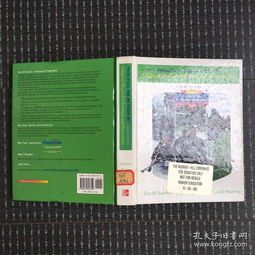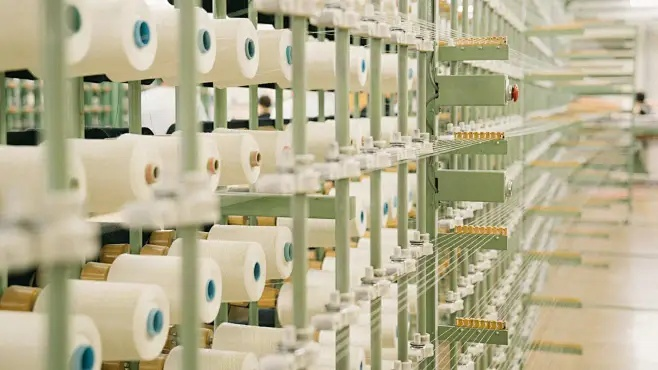Principles and Methods of Colorimetric Determination in Textiles
Colorimetric determination in textiles is a method used to measure the color intensity and hue of fabrics. It involves the use of colorimetric sensors that are sensitive to light absorption, reflection, and transmission. The principle of colorimetric determination in textiles is based on the fact that different materials have different color characteristics and can be measured using colorimetric sensors.,There are several methods used for colorimetric determination in textiles, including spectrophotometry, chromatometry, and fluorescence spectroscopy. Spectrophotometry is the most common method used for colorimetric determination in textiles, as it provides accurate and precise measurements of color intensity and hue. Chromatometry is another method used for colorimetric determination in textiles, as it measures the concentration of dyes and pigments in the fabric. Fluorescence spectroscopy is a newer method used for colorimetric determination in textiles, as it provides additional information about the color composition of the fabric.,Overall, colorimetric determination in textiles is an important tool for measuring the quality and properties of fabrics. It provides valuable information about the color characteristics of textiles and can help manufacturers improve their products by adjusting the color composition and achieving desired color values.
Introduction: Color is one of the most important properties of textiles, as it affects their aesthetic appeal, user satisfaction, and brand image. The determination of colorimetric properties is essential for ensuring quality control and consistency in the production process. This article discusses the principles of colorimetric determination in textiles, including the methods used to measure color intensity, hue, and lightness. We will also provide an overview of some common cases where colorimetric measurements are performed.
Colorimetric Determination Principles: Colorimetric determination in textiles involves measuring the intensity, hue, and lightness of a sample using a spectrophotometer or other colorimetric instruments. Here are the main principles behind these measurements:
-
Intensity (C): Intensity is the total amount of light reflected from the surface of the sample. It is measured using a spectrophotometer that measures the absorption and transmission of light at different wavelengths. The C value represents the average colorimetric property of the sample.

-
Hue (H): Hue is a measure of the color's position on the color wheel. It is determined by comparing the sample's reflectance spectrum with a standard white reference spectrum. The H value ranges from 0° (black) to 360° (white).
-
Lightness (L): Lightness is a measure of the color's brightness. It is calculated by subtracting the reflectance spectrum from a standard white reference spectrum. The L value ranges from -100% to +100%, where +100% represents pure white and -100% represents pure black.
Methods of Colorimetric Determination: There are several methods used to measure colorimetric properties in textiles, including:
-
Spectrophotometry: Spectrophotometry is the most commonly used method for measuring colorimetric properties in textiles. It involves placing a sample on a spectrophotometer, which measures the absorption and transmission of light at different wavelengths. The C* value is then calculated based on the measured data.
-
Chroma Meter: A chroma meter is a specialized instrument that measures the hue and lightness of a sample. It uses a matrix of light sources to create a reference spectrum and compares it with the reflectance spectrum of the sample. The H and L values are then calculated based on the comparison.
-
X-Ray Fluorescence Spectroscopy (XRF): XRF is a non-destructive technique that can be used to determine the chemical composition of a sample. It can be used to analyze the colorimetric properties of textiles by comparing the spectra of the sample with those of known compounds.
Case Study: Let's take a look at a real-world example where colorimetric measurements were performed on a fabric sample. Suppose a textile company was manufacturing a new line of clothing and wanted to ensure that the colors they produced met their standards. To do this, they would need to perform colorimetric measurements on each batch of fabric before it was sent out for production.
To begin, they would use a spectrophotometer to measure the C value of each batch of fabric. They would then compare this value with the desired C value for the specific color they were producing. If the C* value was too high or too low, they would adjust the dye or printing process accordingly.
After making any necessary adjustments, they would repeat the measurement process using a chroma meter to determine the H and L values of the fabric. This information would help them understand how well the fabric was matching the desired color and ensure that it met their quality standards.
Conclusion: Colorimetric determination in textiles is a crucial aspect of product quality control. By understanding the principles behind these measurements and performing them correctly, textile companies can ensure that their products meet consumer expectations and maintain their brand image. Whether you are a manufacturer or a retailer, having a reliable colorimetric measurement system in place is essential for success in the industry.
在纺织品生产和贸易中,色度是一个重要的质量指标,它直接关系到产品的外观和感官质量,本文将详细阐述纺织品色度的测定原理,并结合实际案例进行深入分析。
纺织品色度测定原理
色度定义

纺织品色度是指纺织品在特定波长下的颜色强度或饱和度,它反映了纺织品中各种颜色成分的比例和分布情况。
测定方法
纺织品色度的测定主要依据光学原理和化学分析方法,光学原理主要包括光谱分析、分光光度计等仪器设备的应用,化学分析方法则主要涉及样品中各种色素成分的测定。
(1)光谱分析
光谱分析是一种利用光谱仪对纺织品进行颜色检测的方法,光谱仪能够发射一定波长的光线,并接收样品反射或透射的光线,从而得到样品的光谱数据,通过分析光谱数据,可以确定样品的颜色强度和分布情况。
(2)化学分析方法
化学分析方法主要包括分光光度法、色谱法等,分光光度法是一种常用的化学分析方法,它通过测量样品在不同波长下的吸光度来确定样品的色度,具体步骤包括样品预处理、吸光度测量、色度计算等。
色度测定案例分析
某品牌丝绸面料色度的测定
某品牌丝绸面料在生产过程中,经常遇到色度不稳定的问题,为了解决这一问题,该品牌采用了纺织品色度的测定方法,具体步骤如下:
(1)样品准备:采集不同批次、不同颜色的丝绸面料样品。
(2)光谱分析:使用光谱仪对样品进行颜色检测,得到样品的光谱数据,通过分析光谱数据,可以确定不同颜色成分的比例和分布情况。
(3)化学分析方法:根据光谱数据分析结果,采用分光光度法对样品进行色度计算,具体操作步骤包括样品预处理、标准溶液的配制和吸光度测量等,经过多次实验和数据分析,最终确定该品牌丝绸面料的色度稳定,符合质量标准。
某纺织材料染料色度的测定

某纺织材料在使用过程中,经常遇到染料色度不稳定的问题,为了解决这一问题,该企业采用了纺织品染料色度的测定方法,具体步骤如下:
(1)样品采集:采集不同批次、不同染料浓度的纺织材料样品。
(2)色谱分析法:使用色谱分析法对纺织材料的染料成分进行分离和分析,确定染料成分的比例和分布情况,通过色谱分析法可以快速准确地确定染料浓度和色度,为生产提供参考依据。
实际应用与注意事项
实际应用
纺织品色度的测定在实际应用中具有重要意义,它可以为纺织品的质量控制提供依据,保证产品的外观和感官质量符合标准要求,纺织品色度的测定还可以为纺织品的生产和贸易提供参考依据,促进纺织品行业的健康发展。
注意事项
在进行纺织品色度的测定时,需要注意以下几点:
(1)选择合适的仪器设备和方法,确保测定的准确性和可靠性。
(2)样品采集要规范,确保样品的质量和代表性。
(3)实验过程中要遵守操作规程,确保实验的安全性和可靠性。
结论与展望
纺织品色度的测定是纺织品质量控制的重要环节,它对于保证产品的外观和感官质量、促进纺织品行业的健康发展具有重要意义,随着纺织工业的不断发展,纺织品色度的测定将更加注重科学性和准确性,同时也会更加注重环保和可持续性。
Articles related to the knowledge points of this article:
The 2016 National Textile Manufacturers:An Overview
The Study of Textile Dry Strength Breaking Power



